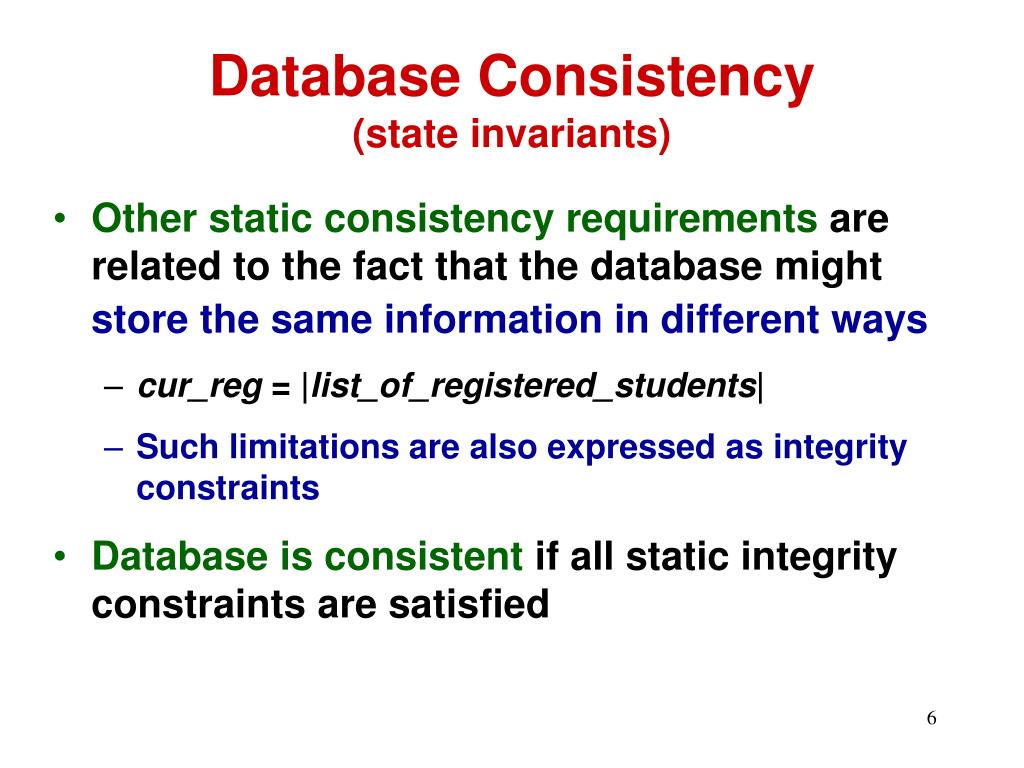

For example, if you have a table of employees with the condition that the salary must be greater than 0, then any transaction must adhere to this constraint.Ĭonsistency also requires that any changes made to data during a transaction are visible to all other transactions. Consistency means that all constraints on the data must be satisfied after the transaction completes. ConsistencyĬonsistency refers to a transaction's requirement to leave the database in a consistent state. ACID guarantees that atomicity will prevent data inconsistency. If ACID properties do not hold, there will be inconsistency in the database, which is confusing at best and devastating at worst. You don't want your funds in a weird intermediate state. If you move more than is available in the first account, or if the second does not exist, atomicity requires that you rollback (undo) any partial transactions, so both accounts are left with funds as they were before the operation began. This principle prevents partial data corruption in the event of a system failure.įor example, imagine transferring money from one bank account to another. In short, atomicity means that the entire transaction either completes successfully or does not take place at all. AtomicityĪtomicity refers to the ability of a transaction to be atomic or indivisible. Now, let's look at each of the four principles that ACID-compliant databases implement. Databases that implement ACID principles ensure that these companies have reliable access to their (often precious) information. It has to be able to recover its systems as quickly as possible if they do happen, which is why you will often see large companies offering very high levels of redundancy at each stage of a data processing system. A company that relies on data processing cannot afford to have its operations interrupted by a system crash. If databases were not ACID-compliant, businesses wouldn't be able to trust their numbers.

ACID principles promise that a loss of power won't ruin your data itself. ACID also ensures the lowest possible risk of corruption or data loss in case of failures, such as power outages or computer crashes.

It's vital because ACID guarantees that data is processed reliably and accurately. These are standard properties of almost all databases that ensure data consistency and reliability.ĭevelopers often mention ACID in the context of business data processing. ACID stands for Atomicity, Consistency, Isolation, and Durability. One of the most critical concepts in database design is ACID.


 0 kommentar(er)
0 kommentar(er)
